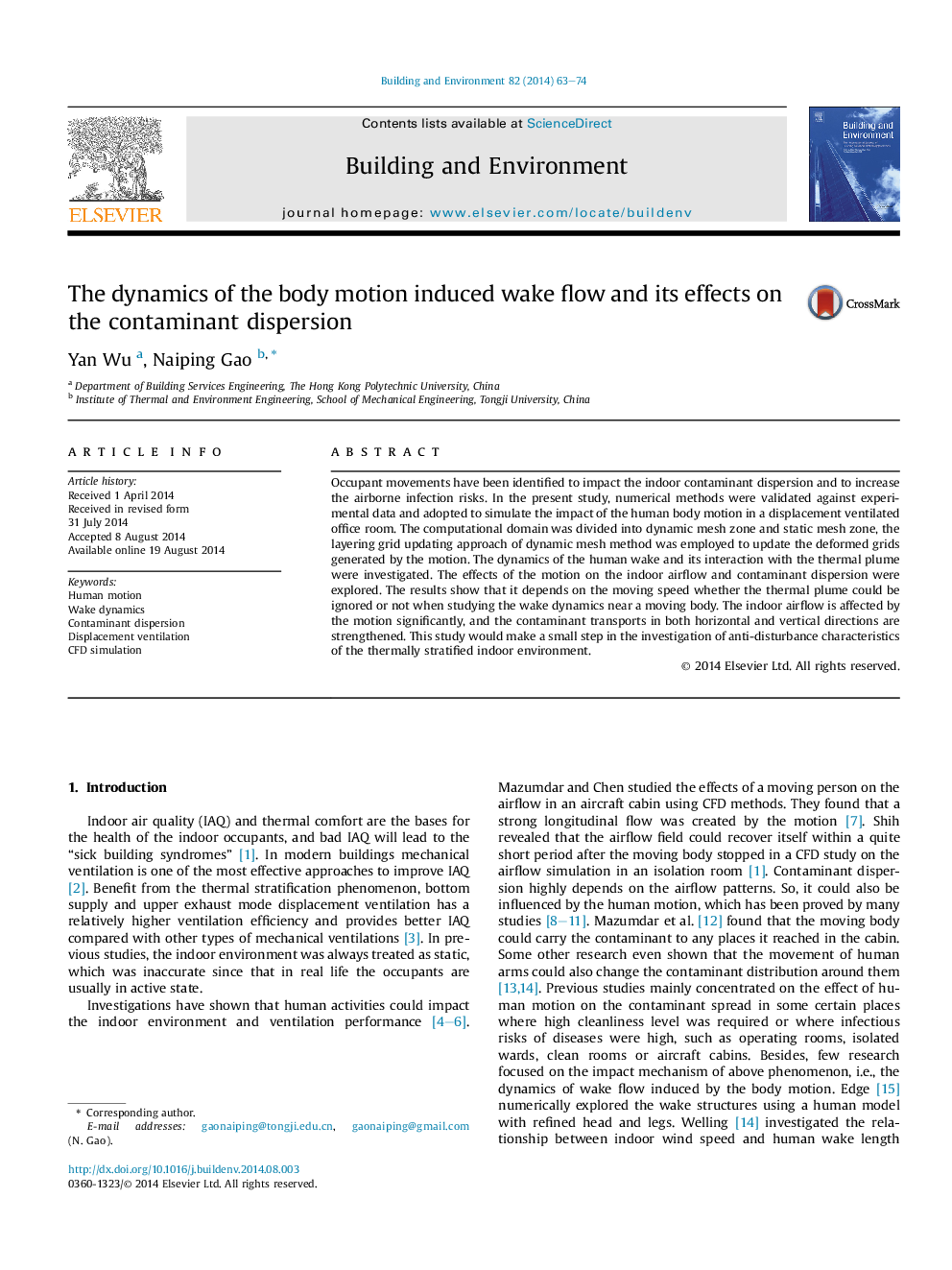| Article ID | Journal | Published Year | Pages | File Type |
|---|---|---|---|---|
| 6700117 | Building and Environment | 2014 | 12 Pages |
Abstract
Occupant movements have been identified to impact the indoor contaminant dispersion and to increase the airborne infection risks. In the present study, numerical methods were validated against experimental data and adopted to simulate the impact of the human body motion in a displacement ventilated office room. The computational domain was divided into dynamic mesh zone and static mesh zone, the layering grid updating approach of dynamic mesh method was employed to update the deformed grids generated by the motion. The dynamics of the human wake and its interaction with the thermal plume were investigated. The effects of the motion on the indoor airflow and contaminant dispersion were explored. The results show that it depends on the moving speed whether the thermal plume could be ignored or not when studying the wake dynamics near a moving body. The indoor airflow is affected by the motion significantly, and the contaminant transports in both horizontal and vertical directions are strengthened. This study would make a small step in the investigation of anti-disturbance characteristics of the thermally stratified indoor environment.
Related Topics
Physical Sciences and Engineering
Energy
Renewable Energy, Sustainability and the Environment
Authors
Yan Wu, Naiping Gao,
